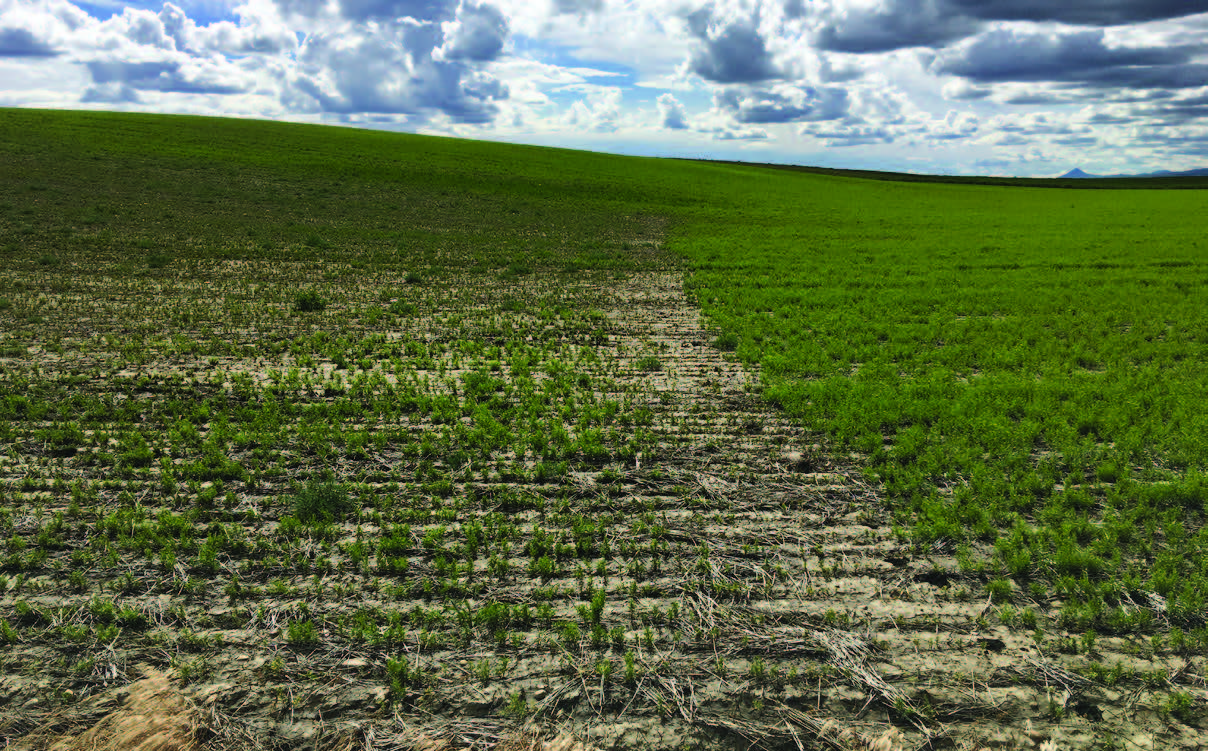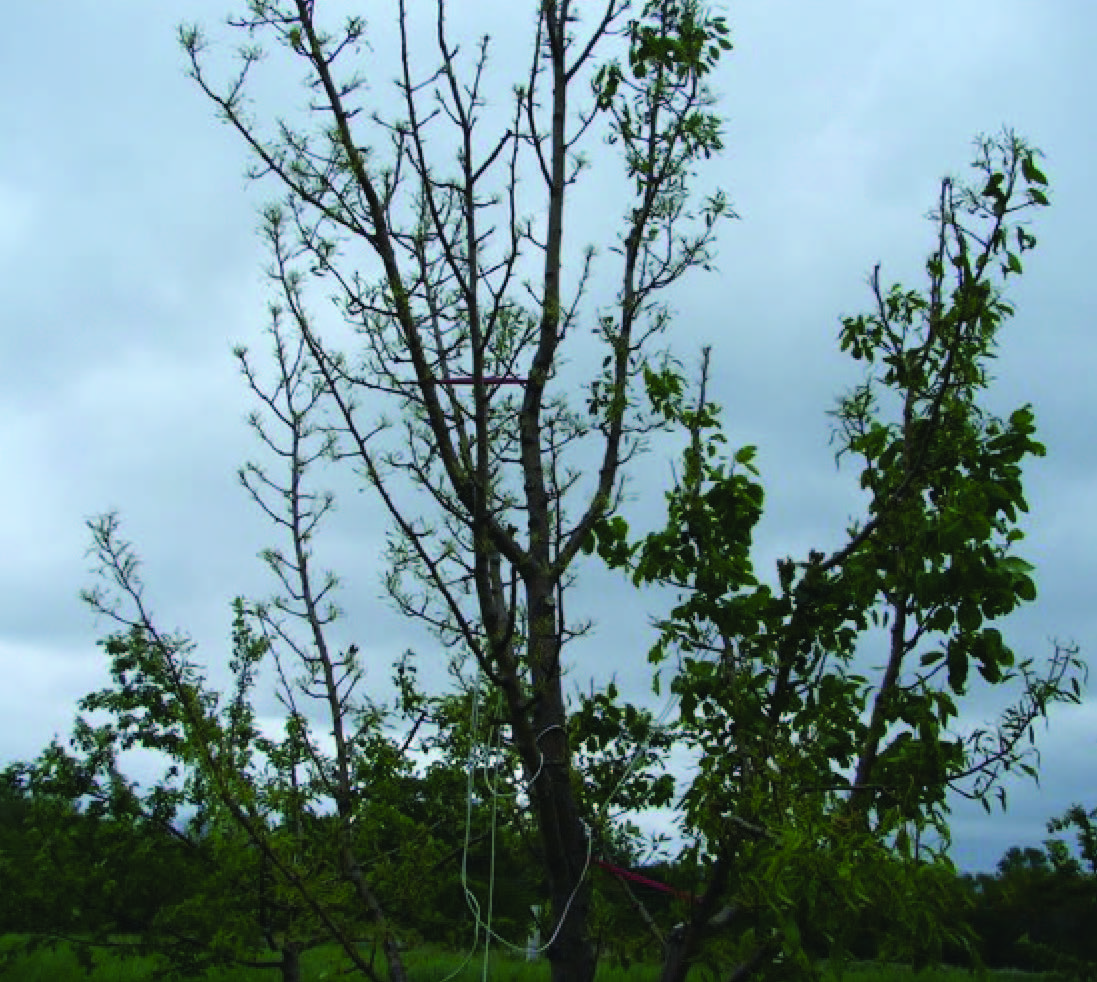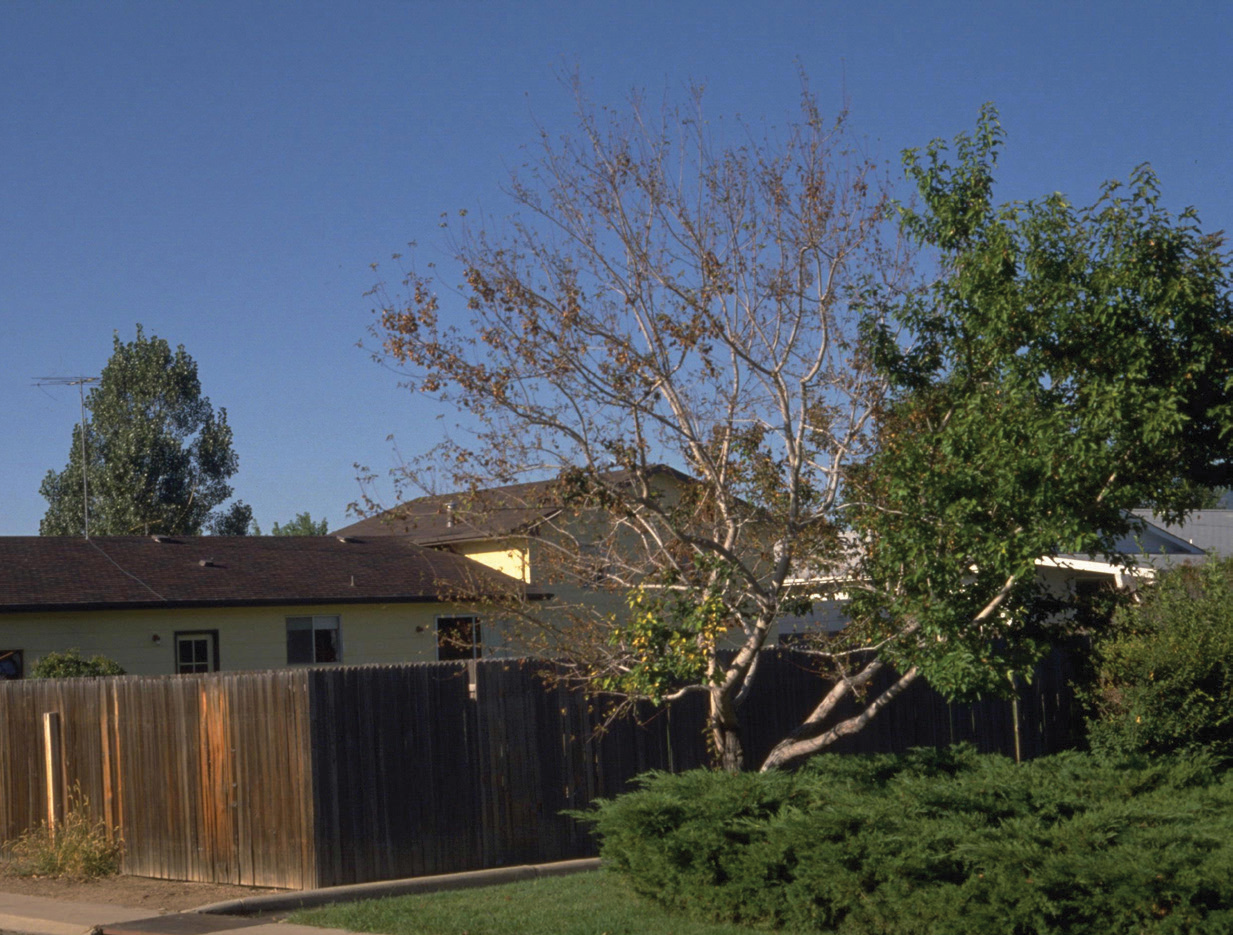Causes of Non-Target Injury
Herbicides are useful tools for managing unwanted plants, but sometimes injury to desired plants can occur. This injury is referred to as non-target injury and is indicated by damage to plants other than the target weeds intended to be controlled by the herbicide application. Many different factors or situations can lead to non-target injury, and symptoms of the injured plants can help identify how and with which herbicide(s) plants were injured. The most common ways in which non-target injury occurs are described below.

Herbicide drift may occur in residential landscapes during or after an application of 2,4-D or dicamba to control broadleaf weeds in lawns.
Herbicide drift is the movement of herbicides awayfrom the intended area of application. Drift most often occurs when fine spray particles move through the air at the time of application (particle drift) or form a gaseous vapor due to volatilization of the herbicide after application (vapor drift). These types of drift are most likely to occur when an herbicide is applied in high wind conditions (> 10 mph) or very high air temperature conditions. Some herbicides (e.g. dicamba) or specific formulations of an herbicide are more susceptible to volatilization than others, for example the ester formulation of 2,4-D compared to an amine formulation. Off-site movement occurs by means other than particle or vapor drift as well. For example, high winds or rain soon after herbicide application can move soil particles that contain the herbicide to another location where non-target plants are then exposed to the herbicide.
Herbicide carryover is another way non-target herbicide injury occurs. The active ingredient in the formulated product remains in the soil or other organic material (e.g. manure, compost, grass clippings) for a period that varies based on the persistence of the active ingredient. When susceptible plants are planted into soil with high enough residual levels of herbicide, or organic material with high levels of herbicide residues inadvertently comes in contact with plants, injury can occur.

Herbicide carryover occurs in both agricultural and residential situations in Montana. For example, pulse crops like lentils and chickpeas can be injured by herbicides applied in previous small grain crops. In home gardens, persistent herbicides can injure vegetable gardens if contaminated amendments like compost or manure are applied.
Operator error or faulty application equipment can also lead to non-target injury. These factors may result in an herbicide being applied at a rate higher than what is recommended, and the high application rate can lead to injury to plants other than the intended weed.

Some examples of faulty application equipment or operator error include improper sprayer calibration, inconsistent application speed or pressure, poor agitation and settling of the herbicide in the bottom of the application equipment or overlapping of spray pattern leading to higher application rates in overlap areas.
Sometimes herbicides are mixed to broaden the spectrum of weed control, but the herbicides may not be compatible with each other. Synergism, which is when two active ingredients exert a greater effect together than the sum of the independent effect of each, can cause non-target injury. Different combinations of adjuvants or other pesticides (e.g. an insecticide or fungicide) can also result in non-target herbicide injury. Herbicide labels will describe any issues related to incompatibility, and it is therefore important to read the entire label.

Trees or shrubs can be injured when a sterilant or “bare ground” herbicide such as tebuthiron is applied to an area where tree roots extend. Sterilants are extremely toxic to woody plants, and exposure can result in severe branch dieback or even death of an affected tree. Depending on the herbicide used, it could be active in the soil for several years after application. Non-target plants can continue to be injured long after application if new roots grow into a contaminated area.
How to Prevent Herbicide Injury
One of the best ways to prevent herbicide injury to non-target plants is to read and follow label directions. Many of the factors leading to non-target injury presented in this publication are discussed on the product label.
Another way to prevent non-target injury is to apply herbicides using equipment that is calibrated and appropriate for the application setting. Furthermore, herbicide application should occur under optimal weather conditions. Application guidelines and precautions to take when using a product are typically described on the label.
Finally, keep good records. Knowing what herbicide was applied, when it was applied, and at what rate can help to avoid unwanted injury to crops and other desired vegetation. Weather conditions at the time of application and 24 to 48 hours after application can help to explain or diagnose injury if it occurs. Good records can also help to settle disputes about potential herbicide injury to non-target vegetation.
